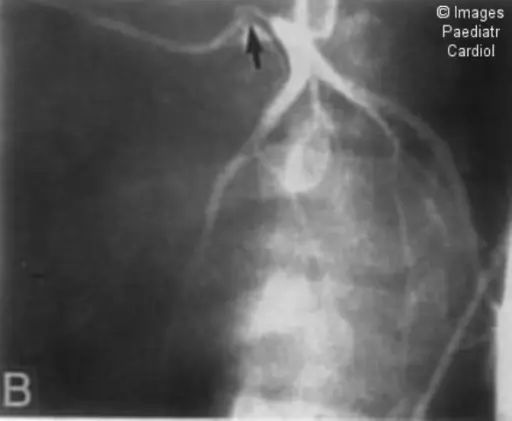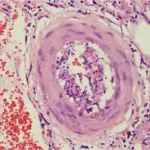Takayasu arteritis is a granulomatous vasculitis affecting the medium and larger arteries.
What is the Pathology of Takayasu Arteritis?
The pathology of Takayasu arteritis is:
-Etiology: The cause of Takayasu arteritis is unknown.
-Genes involved: HLA haplotype A24-B52-DR2.
-Pathogenesis: The sequence of events that lead to Takayasu arteritis are unknown.
-Morphology: The morphology associated with Takayasu arteritis shows asymmetrical thickening of the aortic.
-Histology: The histology associated with Takayasu arteritis shows mononuclear inflammation.
How does Takayasu Arteritis Present?
Patients with Takayasu arteritis typically common in female present at age range of below 40 years. The symptoms, features, and clinical findings associated with Takayasu arteritis include upper extremity weaker pulses, low blood pressure, ocular disturbances, finger numbness, and neurological defects.
How is Takayasu Arteritis Diagnosed?
Takayasu arteritis is diagnosed through clinical presentation. Imaging studies may show arteriographic narrowing.
How is Takayasu Arteritis Treated?
Takayasu arteritis is treated through medical care such as corticosteroid therapy, cytotoxic agents, and biologic agents such as tocilizumab.
What is the Prognosis of Takayasu Arteritis?
The prognosis of Takayasu arteritis is fair with a five-year survival rate of 60%.



